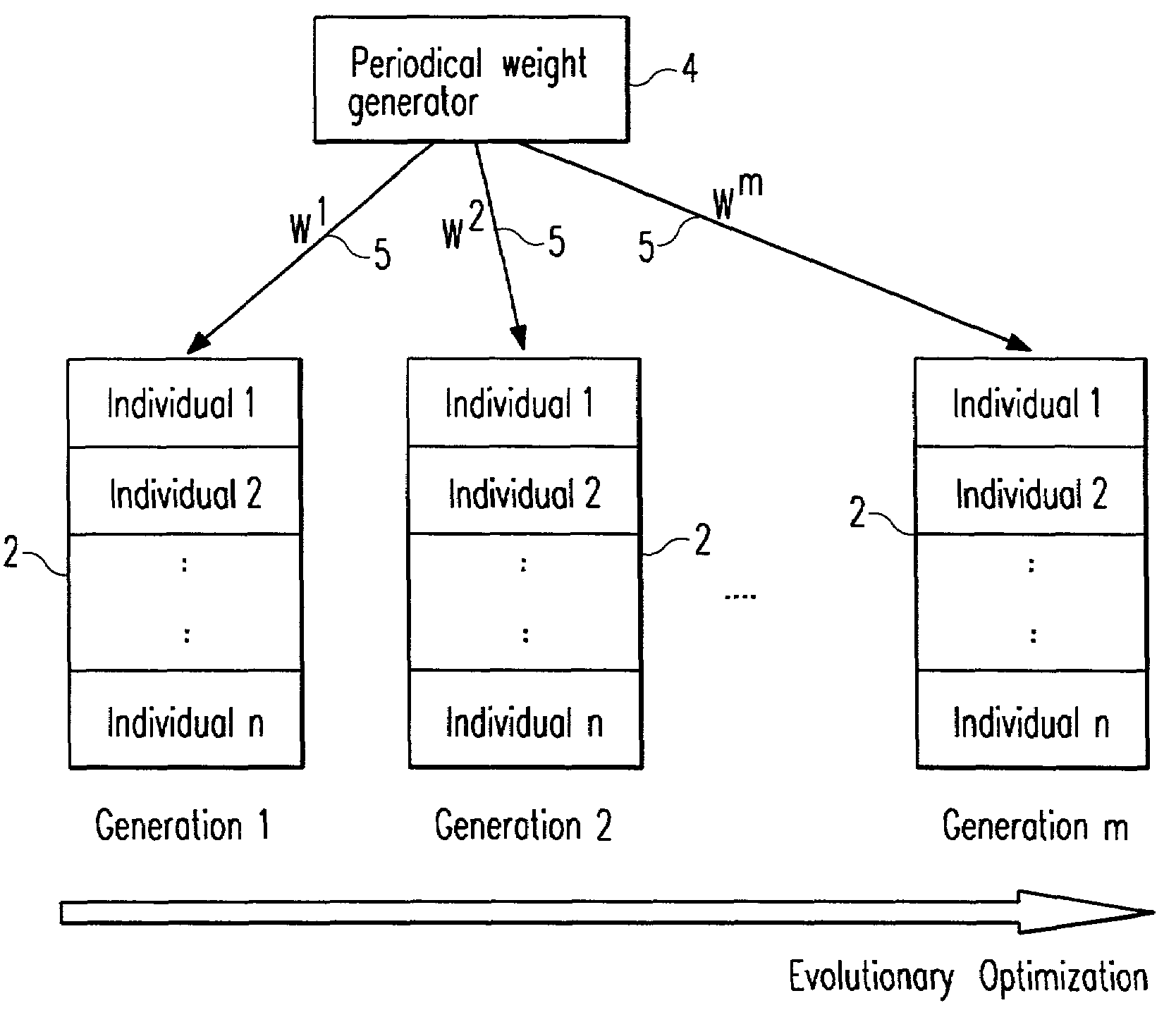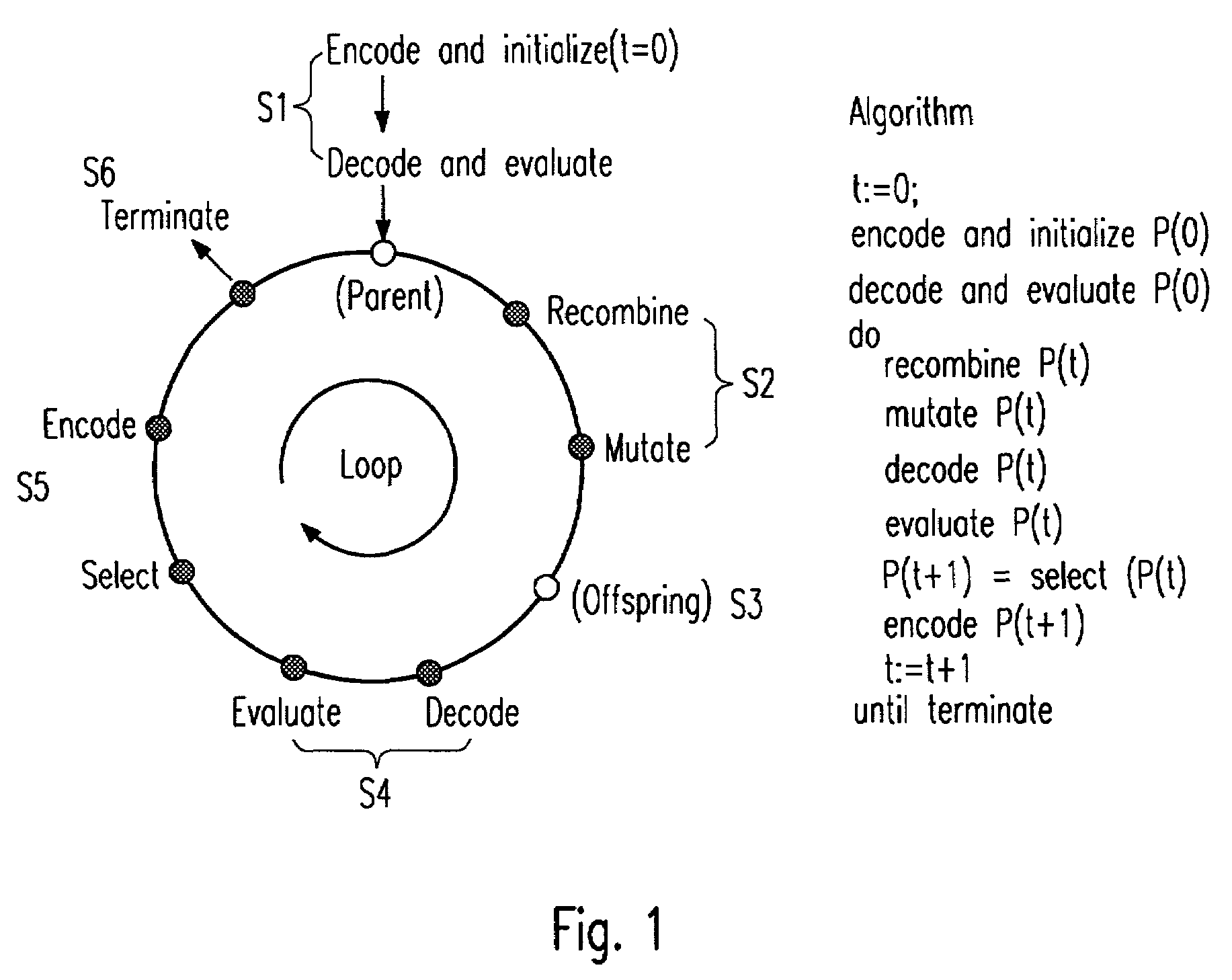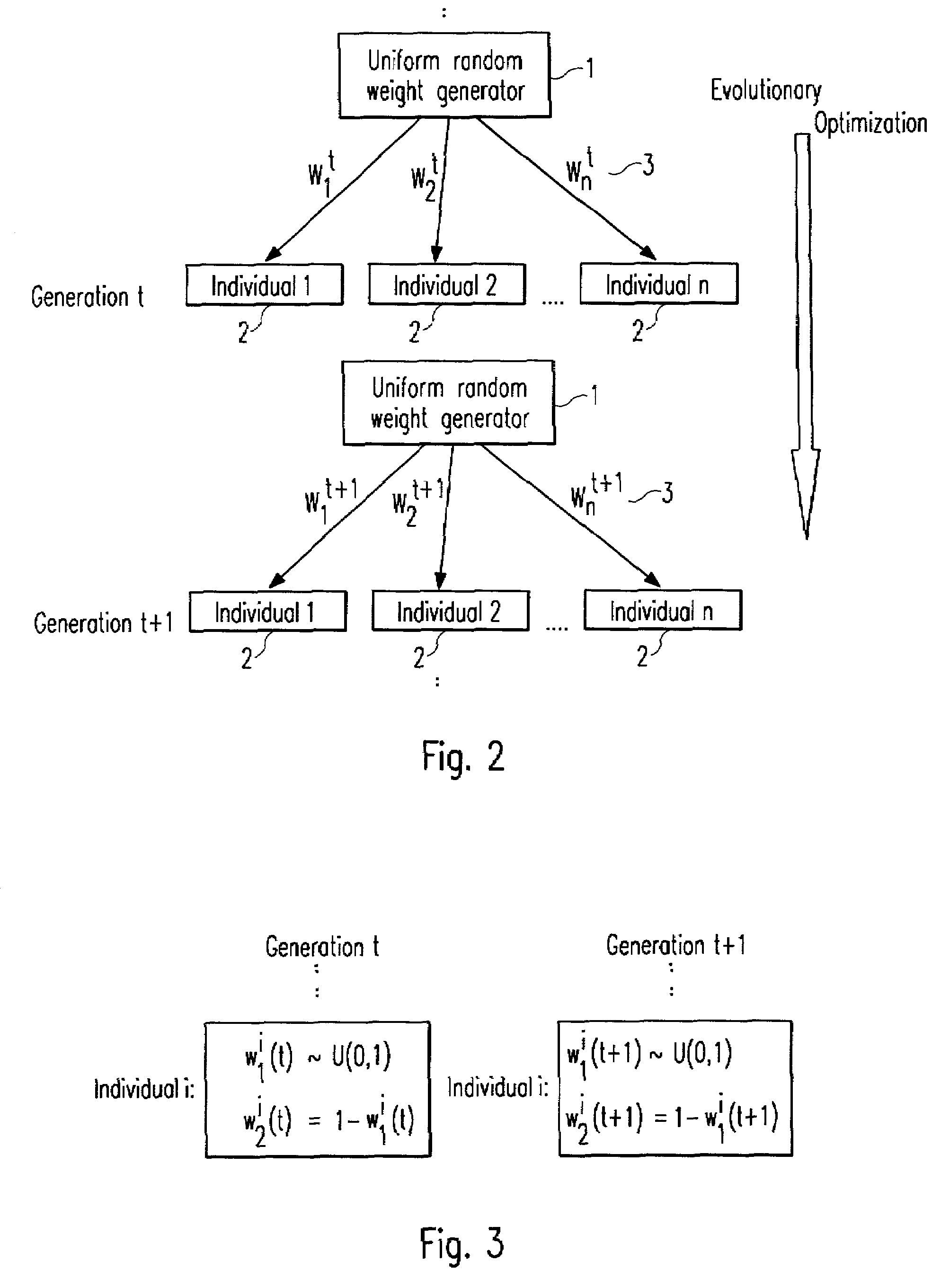Methods for multi-objective optimization using evolutionary algorithms
a multi-objective optimization and evolutionary algorithm technology, applied in the field of multi-objective optimization of multi-objective problems using evolutionary algorithms, can solve problems such as inefficiency of classical search and optimization methods, inability to efficiently handle problems with discrete variables, and problems having multiple problems
- Summary
- Abstract
- Description
- Claims
- Application Information
AI Technical Summary
Benefits of technology
Problems solved by technology
Method used
Image
Examples
Embodiment Construction
[0041]In the standard evolution strategy, the mutation of the objective parameters is carried out by adding an N(0,σi2) distributed random number. The step size σi is also encoded into the genotype and subject to mutation. A standard evolution strategy can be described as follows:
x(t)=x(t−1)+{tilde over (z)} (1)
σi(t)=σi(t−1)exp(r′z)exp(rzi) (2)
where x is an n-dimensional parameters to be optimized, {tilde over (z)} is an n-dimensional random number vector with {tilde over (z)}˜N(0,σ(t)2), z and zi are normally distributed random numbers with z, ziN(0,1) r,r′ and σi are the strategy parameters, where σi is mutated as in equation (2) and r, r′ are constants as follows:
r=(√{square root over (2√{square root over (n)})})−1; r′=(√{square root over (2n)})−1 (3)
[0042]There are several extensions to the above standard evolution strategy (ES). In the present description an ES with Rotation Matrix Adaptation and an ES with Covariance Matrix Adaptation as well as the standard ES are used to ...
PUM
 Login to View More
Login to View More Abstract
Description
Claims
Application Information
 Login to View More
Login to View More - R&D
- Intellectual Property
- Life Sciences
- Materials
- Tech Scout
- Unparalleled Data Quality
- Higher Quality Content
- 60% Fewer Hallucinations
Browse by: Latest US Patents, China's latest patents, Technical Efficacy Thesaurus, Application Domain, Technology Topic, Popular Technical Reports.
© 2025 PatSnap. All rights reserved.Legal|Privacy policy|Modern Slavery Act Transparency Statement|Sitemap|About US| Contact US: help@patsnap.com



